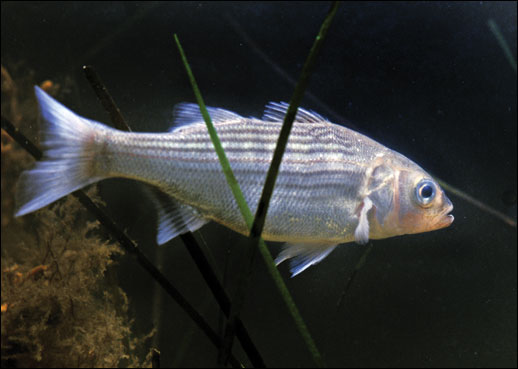|
April 2013 • Volume 12, Number 1

|
Daniel Strain
Did you know that scientists can read the rings on an otolith, a fish's inner-ear structure, to trace its migration path? Recent studies of these otoliths by researcher David Secor and his colleagues show that migration patterns are more complicated than previously thought. more . . . |
Michael W. Fincham
How many striped bass could be coming next year? Their sudden and unpredictable boom years can turn out twice as many offspring as the year before, sometimes three times as many, sometimes 10 times as many. Scientist Bob Wood went looking for a link between large-scale climate forces and those sudden outbreaks of boom years and bust years for striped bass — and for other Bay-spawning fish. And what about those boom and bust years for menhaden — and for other coastal spawning fish? He discovered that boom years for Bay spawning fish were usually bust years for coastal spawning fish. And this seesaw pattern seemed linked to a mysterious and newly discovered climate cycle in the middle of the North Atlantic. more . . . |
As a student, William K. Brooks studied at Harvard with Louis Agassiz, the Swiss scientist who became one of the founding fathers of the modern scientific tradition. As a biologist on the faculty of the Johns Hopkins University at the turn of the 20th century, Brooks became the first great oyster scientist in America and an early (and unsuccessful) advocate for oyster farming in Maryland waters. more . . .
Maryland will support four Knauss Marine Policy Fellows in 2013 to work for federal agencies on issues involving marine and coastal resources. more . . . |
Bonny Marcellino, assistant director for administration at Maryland Sea Grant, has retired after 15 years. more . . . |
Maryland Sea Grant has named Michael Allen as its new assistant director for research. more . . . |
|